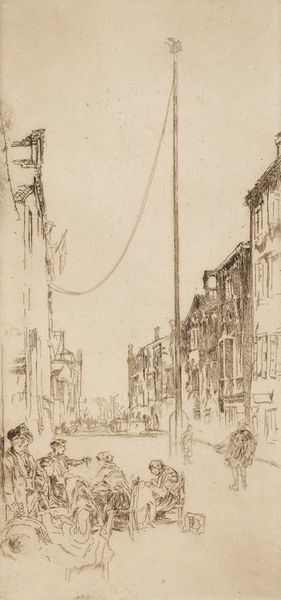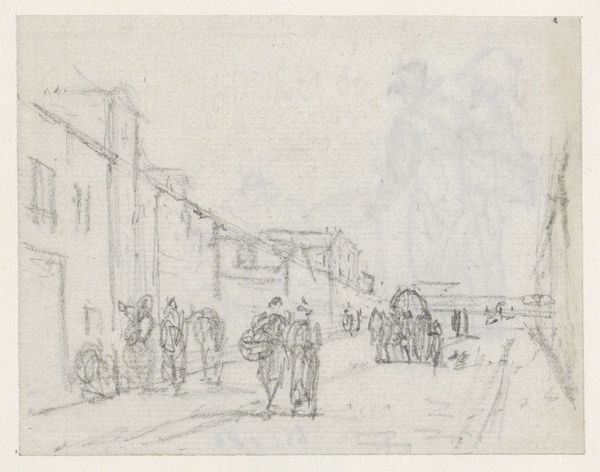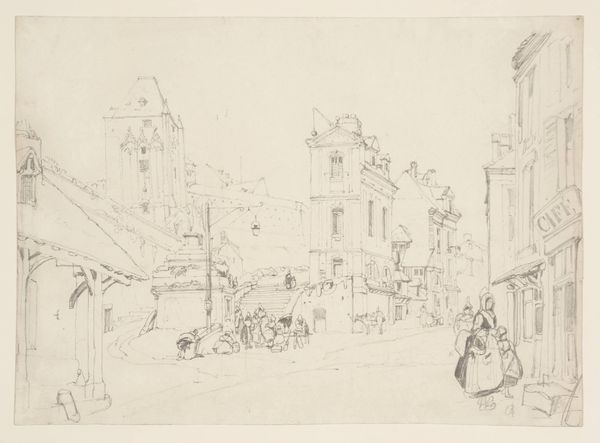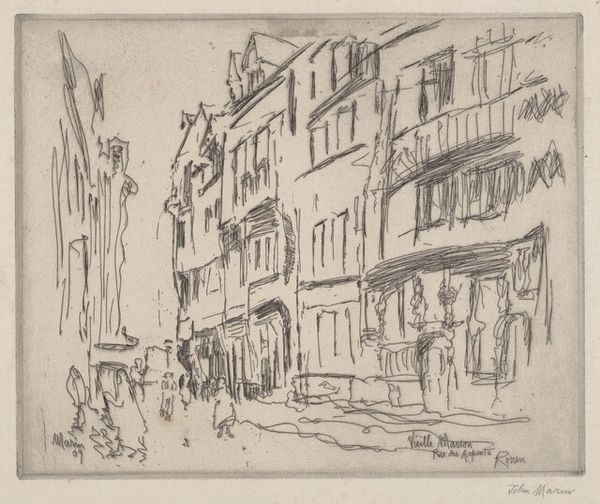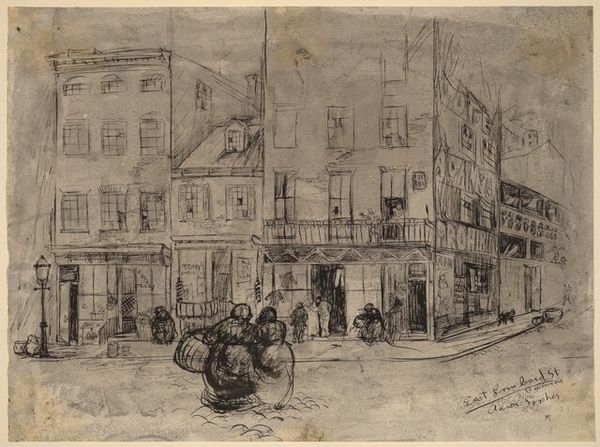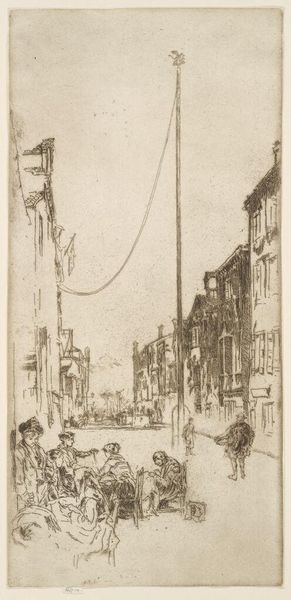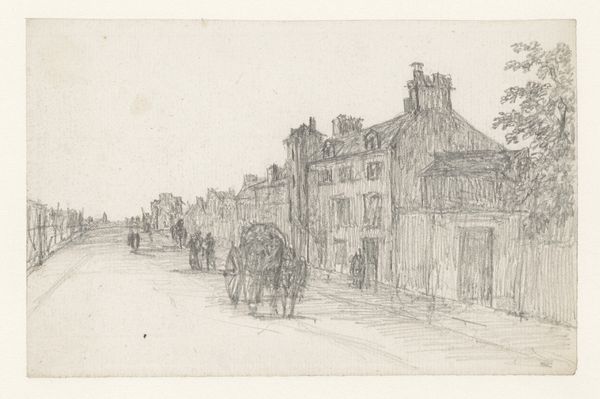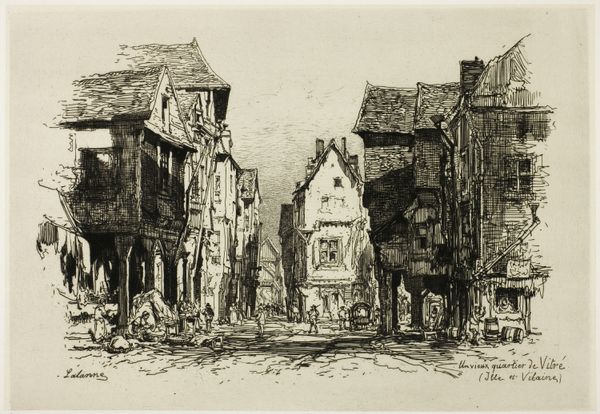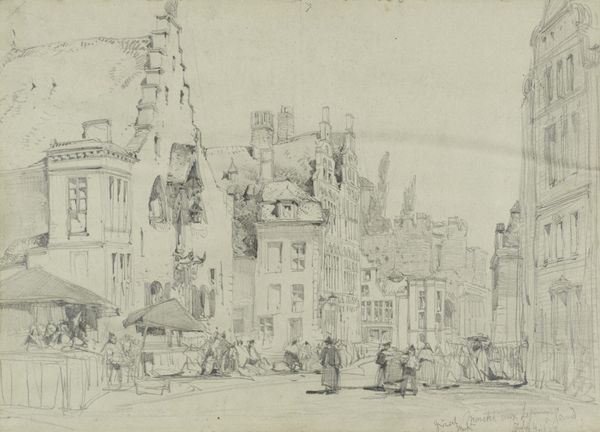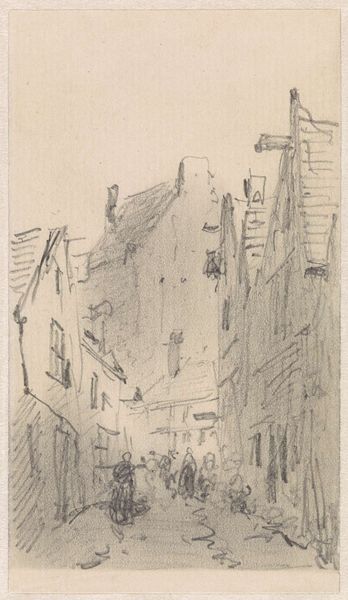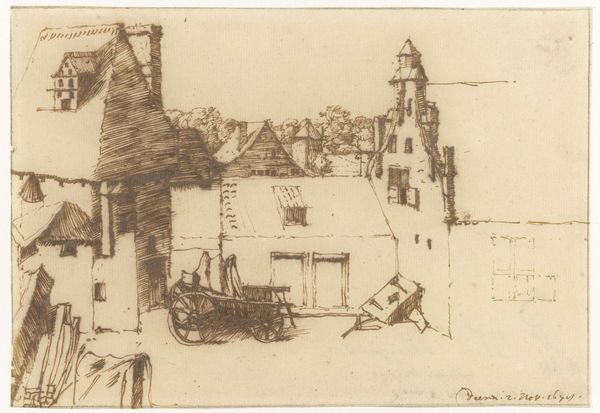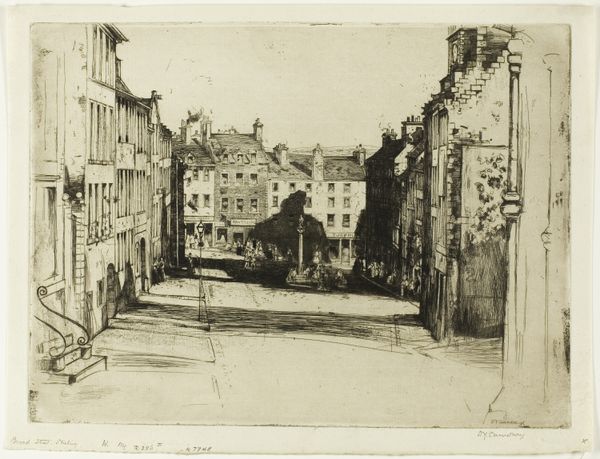
drawing, print, etching, paper, ink
drawing
pen sketch
etching
paper
ink
line
cityscape
realism
Copyright: National Gallery of Art: CC0 1.0
Muirhead Bone created this print of Salisbury using etching, a process with a long history. In etching, a metal plate, often copper, is coated with a waxy, acid-resistant substance called a ‘ground.’ The artist then scratches an image into this ground, exposing the metal underneath. When the plate is immersed in acid, the exposed lines are etched or ‘bitten’ into the surface. The longer the plate is exposed, the deeper and darker the lines will be. Bone would have likely used a variety of etching needles to create varying line weights, creating tonality, depth and texture. Once the etching is complete, ink is applied to the plate, filling the etched lines. The surface is wiped clean, and then it is pressed onto paper, transferring the ink and creating the print. Here, the material processes are a direct reflection of social reality, depicting laborers moving heavy goods, and offering a snapshot of work and commerce. By emphasizing this, Bone challenges traditional distinctions between fine art and the everyday world of making.
Comments
No comments
Be the first to comment and join the conversation on the ultimate creative platform.
